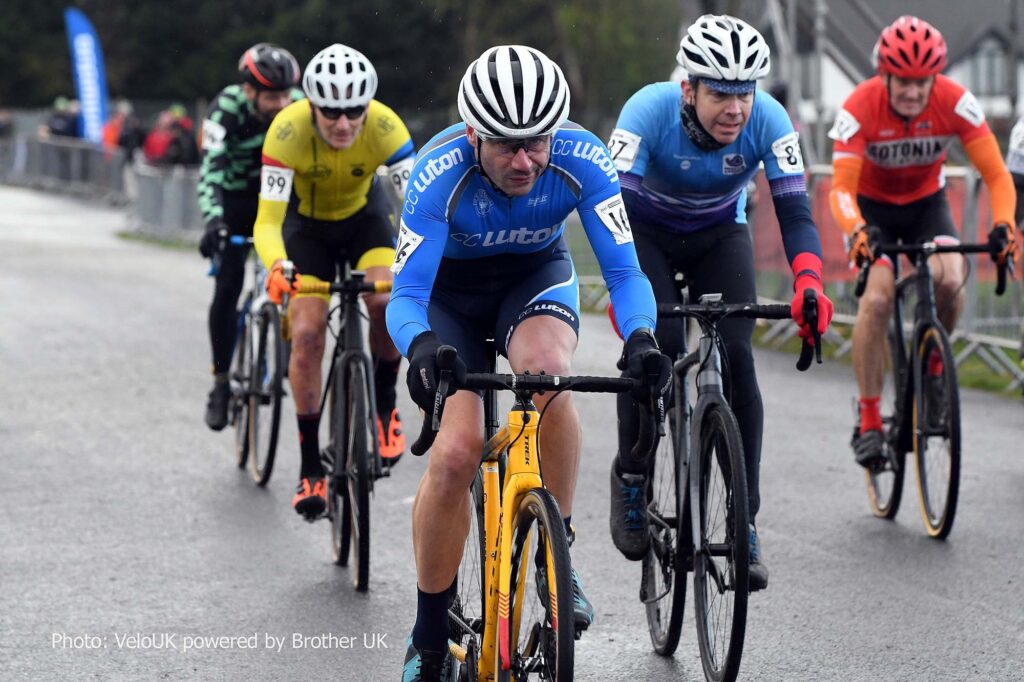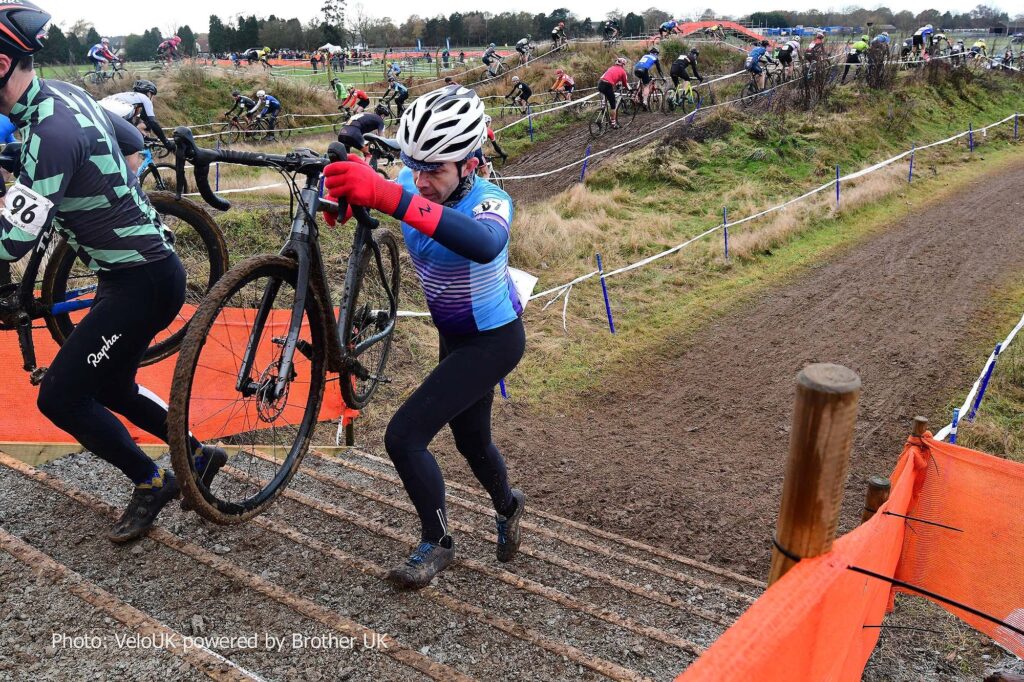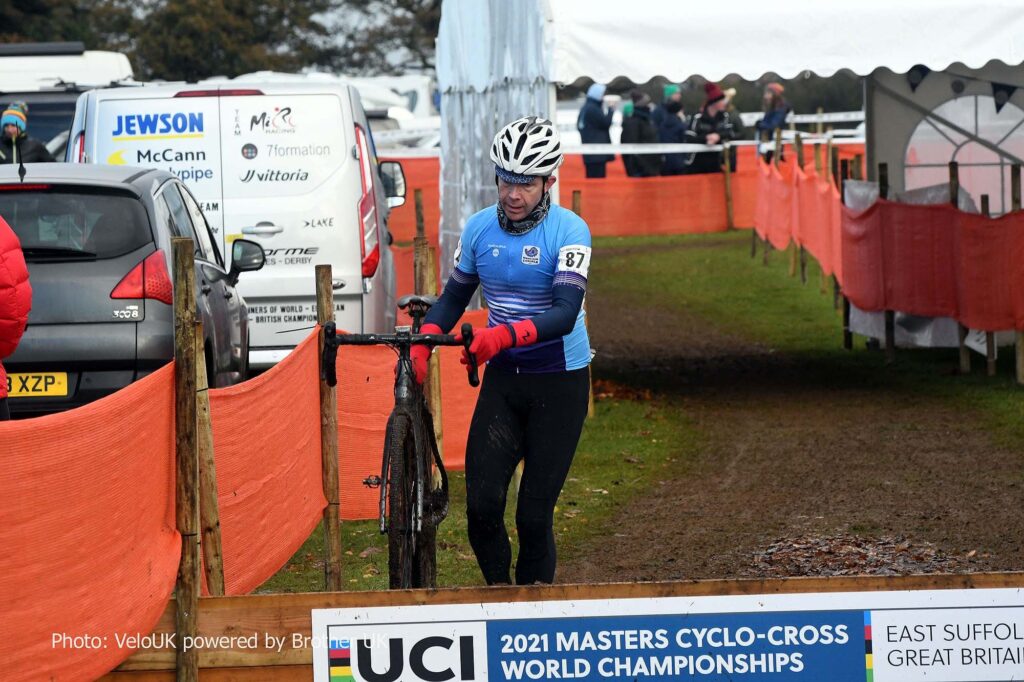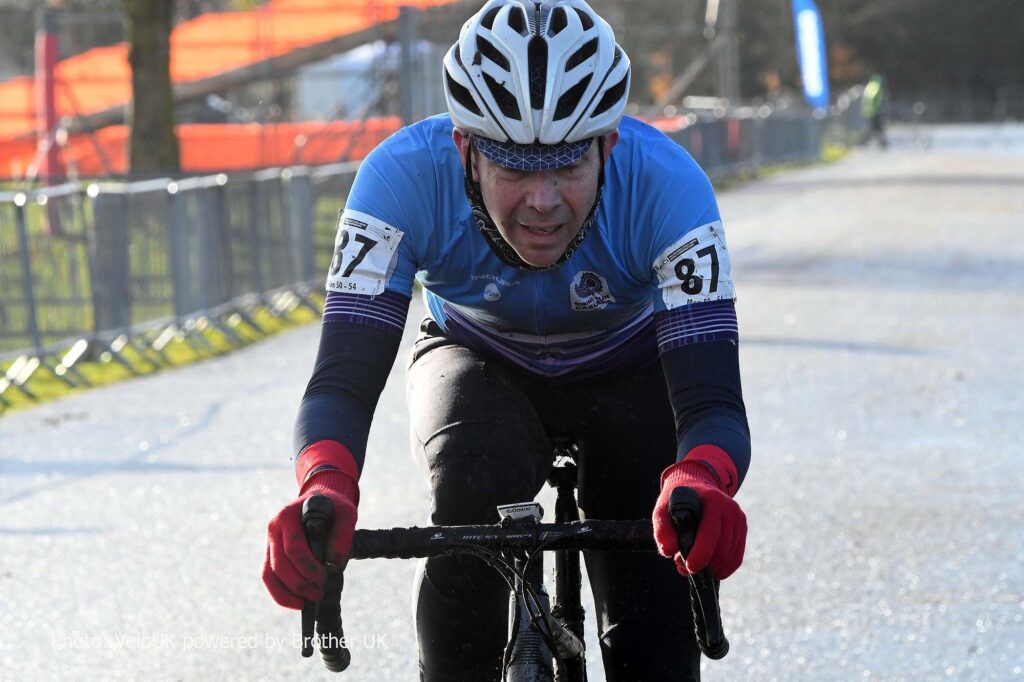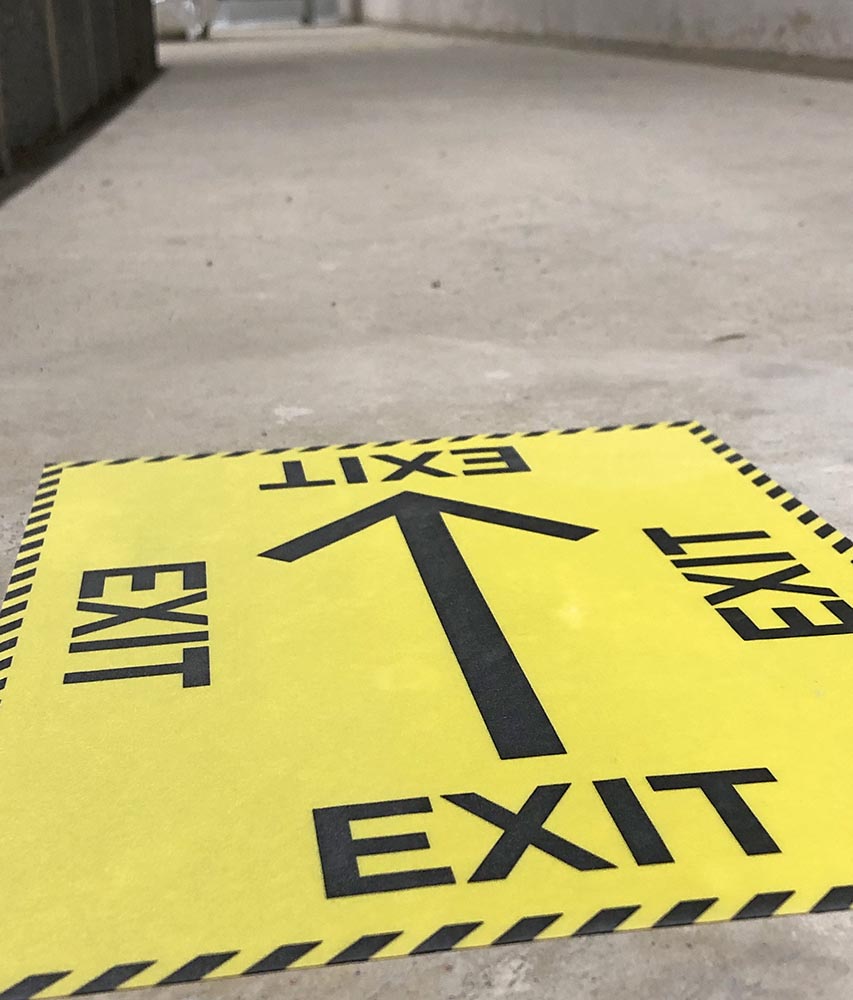Remember how Richard rode the World Masters Cyclocross Championships last year, and how things didn’t go exactly to plan? Well, he vowed to return this year and, relatively speaking, managed to exorcise his demons.
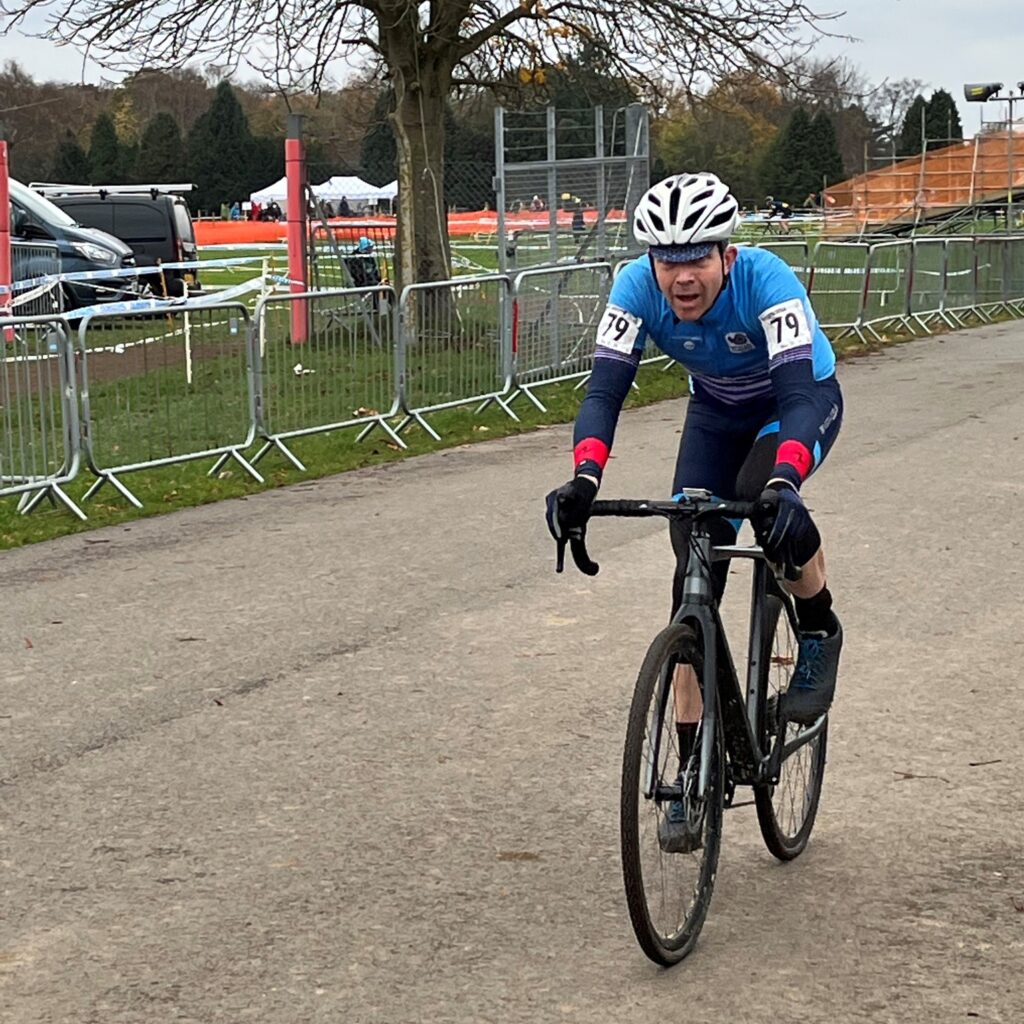
Last year’s UCI World Masters Cyclocross Championships could definitely be (for me at least) categorised as “type 2 fun”. As I wrote shortly after on the R&A Blog, my race was blighted by mechanical issues pretty much from the word go. Heavy rain over the previous week (and on the day itself) made the course very muddy. If you have a crew of helpers washing and prepping your cache of spare bikes to swap over onto each lap, this isn’t a problem. However, as a privateer with one bike and no helpers, my ride quickly became clogged up with muck, causing the chain to come off on multiple occasions.
Having soldiered on to the bitter end I finished last. Dead last.
At the time, I vowed to return in 2022 and try to improve on my result. My entry was submitted in September and approved pretty much straight away. Clearly COVID and the cost of living crisis was still having an impact on individual riders and their decision whether or not to race, particularly those from outside the UK. “If they’ll have me back they must be desperate,” I thought.
As in 2021, the Ipswich course hosted a round of the Eastern Cyclocross League the weekend prior to the “worlds”. It also doubled up as the annual regional championships. That gave us locals the opportunity to recce the course again in advance of the main event the following week. As is often the case at the end of November, the weather was pretty wet and wild. The course was heavy going but not as bad as the world championships the previous year. The organisers had also made some subtle alterations to the course that definitely helped reduce the possibility of mechanicals. In particular, the approach to the first flyover, which saw me dropping my chain on so many occasions last year, had been straightened out. It was now a long, fast approach, and that meant a higher gear on the way up and not having shift on the way back down.
On the down side, the organisers has trucked in a huge quantity of sand to create a pit of around 30 metres in length, which we’d all have to negotiate. Being a wet day, the sand was actually pretty easy to ride – the added moisture helped it compact. Perhaps not what the organisers were hoping for?
After the regionals, there was some cause for optimism. I’d had a fair result and, with similarly fair conditions, next week could see me improve on my 2021 result.
My mind is always focused on the weather in the days leading up to a race. It has a huge bearing on how you set up your bike, particularly tyre choice and tyre pressure. If conditions are wet and muddy, then very knobbly tyres ridden at ridiculously low pressures are the order of the day. If things are drier and firmer – less tread and more pressure. Riding on a shoestring budget, I don’t have the luxury of multiple sets of wheels set up with different types of tyre. Instead, I have to take the middle ground – what’s known as an “intermediate” tyre and adjust the pressures as best I can.
The weather improved dramatically between the regionals and the worlds. It was cold but dry, and high winds helped dry out the course dramatically. When I arrived on the Saturday morning, the difference in conditions was striking. The course has dried out so much I was able to increase my tyre pressures by about 10psi front and rear. There was chatter on Facebook pages that some riders were intending to ride “file tread” tyres – something rarely seen at this time of year.
We were allowed onto the course for half an hour practice prior to the race. It’s fair to say I was delighted with the dry, fast conditions. Dry conditions meant virtually no mud, which meant bikes would stay clean and not having spare bikes and pit crew wouldn’t be a disadvantage.
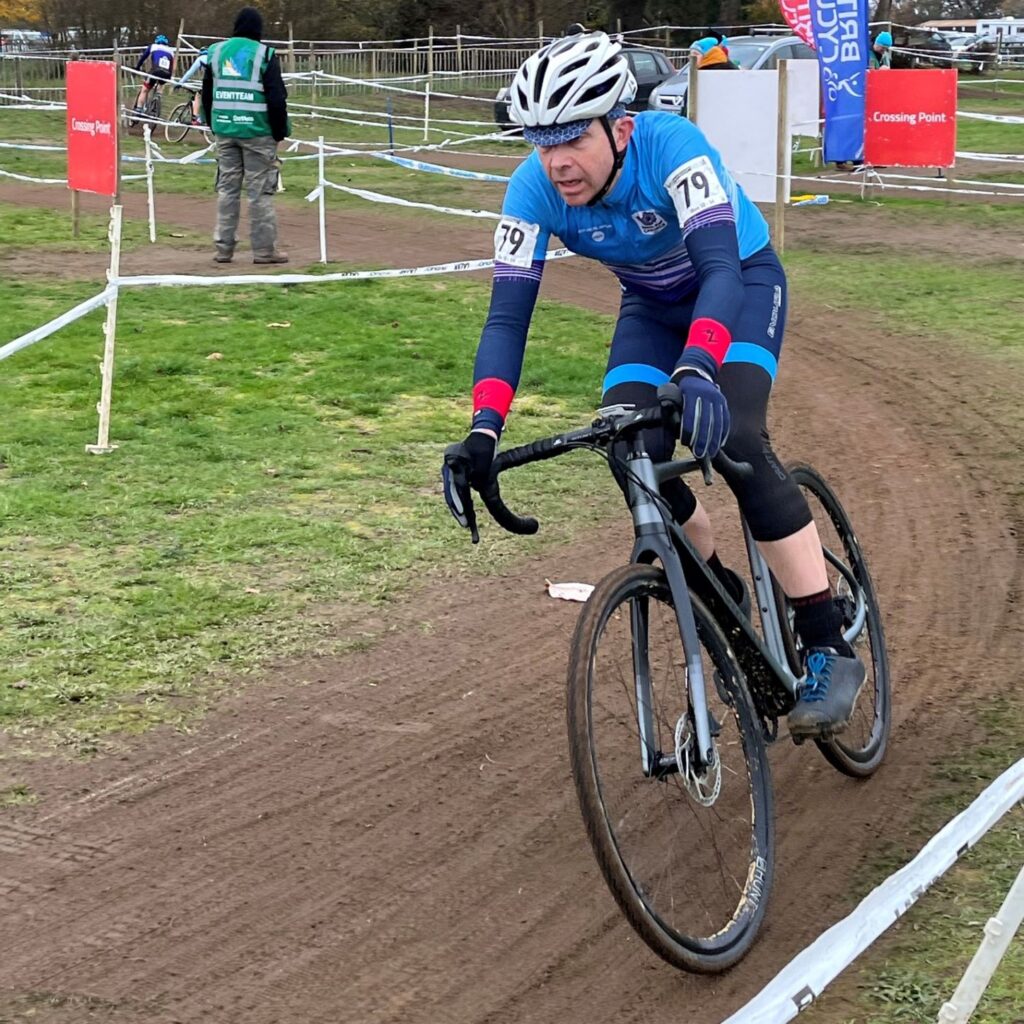
Yes, that’s mud I’m riding over, but it’s the right kind of mud!
My race number and start position was 79 – one row further up than last year and, more importantly, without Nick Craig – British cyclocross legend and runner up last year – directly behind me. I got a clean enough start and as we approached the end of the start / finish straight and things settled down, I was quietly satisfied.
First time up and over the flyover – no mud, no issues. Fantastic. Over the hurdles then round to a tricky off-camber section, except the organiser had decided to take it out to avoid a bottleneck. This was going well. Onto the sand – not so great. No rain meant the sand had dried out, making it looser and more difficult to ride. It’s fair to say I didn’t ride the sand very well. Into the 4×4 area – a bit of mud but so much quicker than last week. Onto the wooded section – technical singletrack which is probably my favourite terrain. I rode it pretty well but it’s hard to get past anyone – you’re following wheels all the way through. Out into the windy, open areas then back over the start finish line. Lap 1 done and dusted.
Looking around me I could see several riders ahead and a few behind. Relatively speaking this was going well. Over the course of the next lap, I managed to get past another couple of riders then swapped positions with several up until the penultimate lap. At that point the elastic snapped – the constant efforts to keep up with those around me took its toll. I accepted my fate and settled in to ride out the final lap and a half, safe in the knowledge the riders behind me were too far away to be a threat.
I crossed the finish line a lap down on the winner (standard) but feeling satisfied with my efforts. I wasn’t aware of my exact finish position, but it didn’t matter – the race had gone well. As it turned out, I had improved on my previous year’s result. Just.
The much drier conditions meant for a much faster race. A week before with all the mud, the organisers were predicting the best riders would be lapping in around 10 minutes. As it turned out, the best riders were lapping in under 8 minutes and even us lot at the back were capable of sub 10 minute laps. The faster conditions do, however, make it more difficult to gain places and once I was into my groove there wasn’t much scope for moving up.
In the end I finished second to last which, on the face of it, doesn’t sound like much to shout about. The whole day was a much more pleasurable experience, however, and there were a couple of riders who I had been ahead of that DNF’d. Had they finished my result would have looked even more respectable. It was also reassuring to see a couple of local riders finishing just ahead of me who, in league races, have the advantage of higher grid positions. As I build a bigger set of results at a local level, I should be able to compete at the more pointier end of my races.
The World Masters moves to Hamburg for 2023 so it looks like I won’t be racing next year. However, the good thing about masters racing is there’s no upper age limit – as long as you can sling a leg over your bike you can race. This year, there was one woman competing in the 75+ category, and two men took to the line in the 80+ category. On that basis, circumstances should be favourable for me to make a return before I hang my wheels up. You never know – I might even win it one day.


